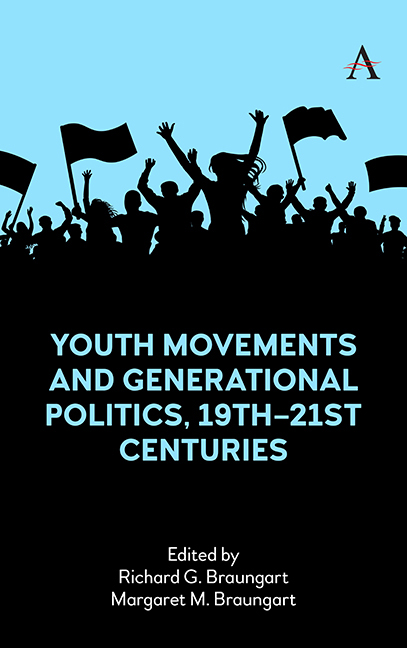9 - Historical Generations and Youth Movements: A Theoretical Perspective
Published online by Cambridge University Press: 18 November 2023
Summary
Young people are marching again throughout Western Europe and the United States with banners and signs reading: EUROSHEIMA NE!, EUROPA ATOM WAFFEN FREI, RAUS NATO!, NON AUX CENTRALES NUCLEAIRES, NOTTINGHAM FOR NUCLEAR DISARMAMENT, NO NUKES, and PENNSYLVANIA IS EVERYWHERE. During an October, 1981 peace rally in Bonn, West Germany, more than 250,000 young people gathered to hear American Coretta Scott King (widow of the slain U.S. civil rights leader, Dr. Martin Luther King, Jr.) and singer Harry Belafonte tell the crowd, “Millions of Americans stand by your side,” and the entire crowd sang the civil rights hymn “We Shall Overcome” at the close of the rally (Reid, 1981). While the dominant themes in many of these marches and demonstrations have been the political and social implications of nuclear weapons and nuclear technology, contemporary youth movement activity is not limited to the nuclear power issue, nor is it confined to North America and Western Europe. Issues have included racism and unemployment (in London, Johannesburg, Miami), revolutionary insurrection (in Northern Ireland, Colombia, El Salvador, Nicaragua), crime, rowdyism, and youthful rampages (in the Soviet Union, United States, Switzerland), student strikes (in France, Italy, Pakistan, Poland, South Korea, the Philippines), and ideological-religious struggles (in Spain, Turkey, Thailand, Uganda, Afghanistan, Iran, Egypt).
Given the extent of youthful political activity in the last two centuries and the modern explosion of such activity that reached its zenith in the 1960s and continued, albeit to a lesser extent in the 1970s and 1980s, there are surprisingly few theories that explain the historical patterns and generational cycles of youth movement activity. In particular, what remains unclear is the relationship between historical and generational forces that give rise to youth movements, and especially why certain epochs experience dramatic generational rebellions while others do not. In order to address this issue, the present study will explore how and why historical and generational forces interact to produce youth movements. The attempt is made to construct a theoretical model of historical generations and youth movements that is broad, global, and historically applicable. To accomplish these rather ambitious tasks, the following procedures are outlined. First two theoretical approaches, the historical and the generational, to the study of youth movements are presented and discussed in detail. These theoretical approaches are among the most popular macrosociological theories explaining youth movements.
- Type
- Chapter
- Information
- Youth Movements and Generational Politics, 19th-21st Centuries , pp. 193 - 234Publisher: Anthem PressPrint publication year: 2023

